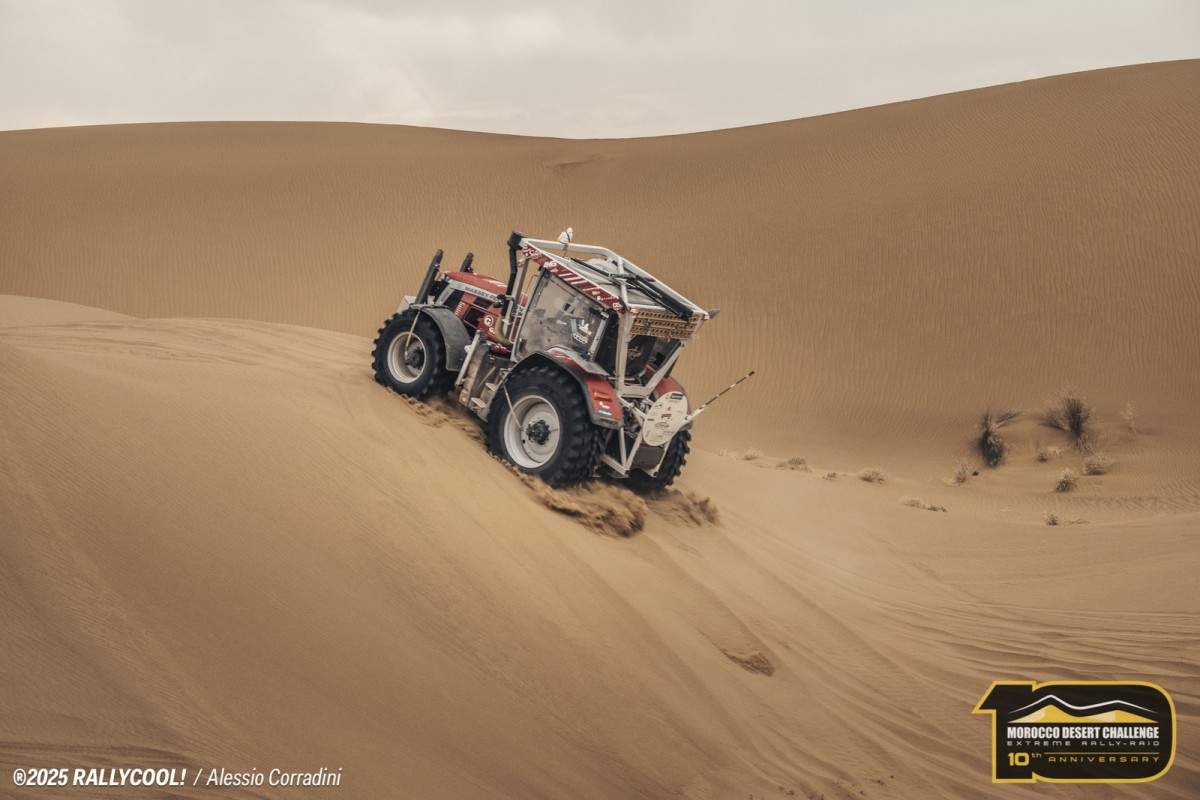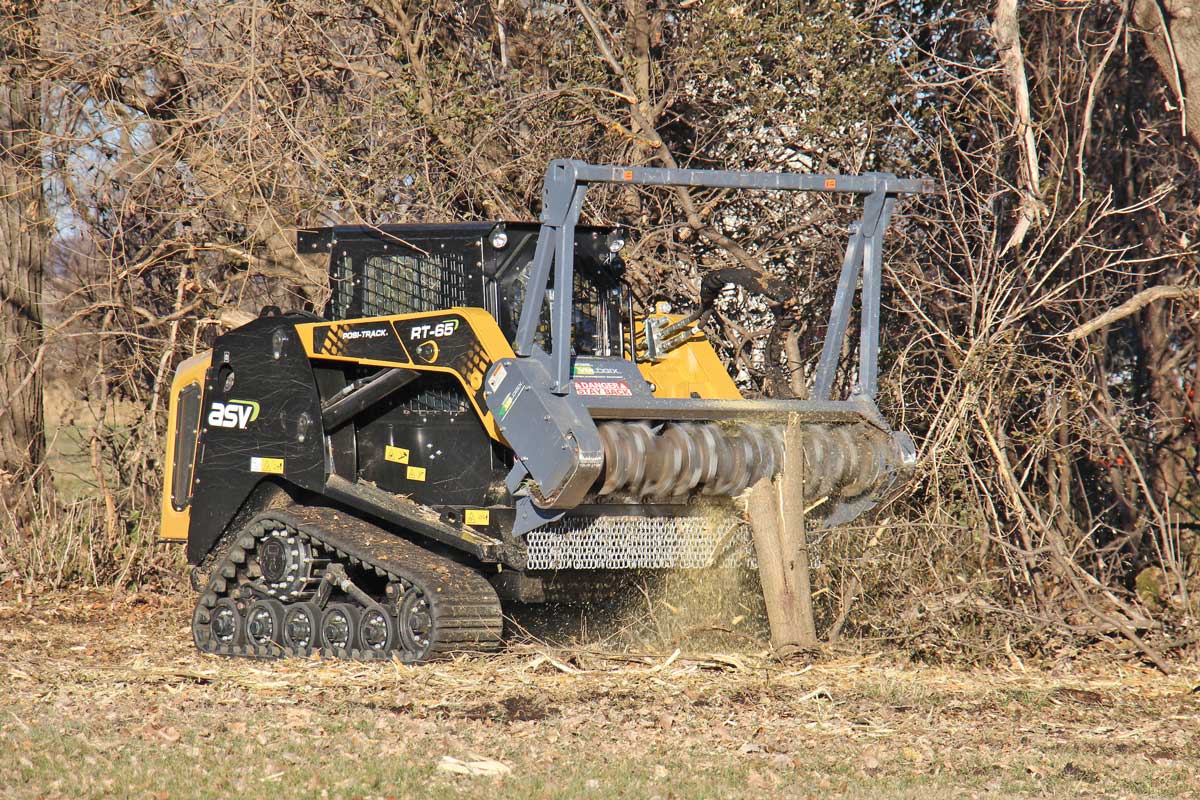Smart Snowblower Solutions
When the weather turns cold and the snow starts to fly, people start to warm up their compact tractors. That’s because the dependability, versatility and affordability of this machine help to make it ideal for a wide variety of tasks, including snow removal. However, to get the most work out of this winter workhorse, many people consider purchasing a snowblower attachment. This addition helps move large volumes of snow quicker than a standard loader bucket. Unfortunately, many people have trouble finding the right unit to meet their needs. The tractor wasn’t originally designed with snowblower attachments in mind and, as a result, some of the available solutions can be awkward for people to operate. Thankfully, manufacturers have made some design improvements over the years, and today there are a wide variety of smart snowblower solutions to accommodate any operator.
Going Backward
The most common and traditional way to mount a snowblower on a tractor is the three-point hitch. This universal hitching system is easy to hook up, and it allows direct access to the tractor’s rear power take-off (PTO) shaft. The PTO transfers full engine horsepower to the snowblower, resulting in reliable, high-performance operation. The rear mount is also the simplest setup available, making it the most cost-effective solution on the market.
Additionally, a rear-mount snowblower allows full use of the tractor’s front loader bucket (if one is equipped). Therefore, the operator can use the front bucket to scrape ice, scoop snow or drag it away from buildings, while using the rear blower to throw the snow. Despite the proven performance of the rear-mount design, there are limitations. The three-point hitch is unable to tip or rotate the snowblower on the go, nor can it raise the blower more than a couple feet off the ground. This makes it difficult to maneuver or chip away at extremely tall drifts. The three-point hitch can’t apply down pressure, so the snowblower always operates in “float” mode, eliminating the ability to scrape ice and hard pack.
Beyond operational issues, most people will agree that it is inconvenient and unnatural to operate a rear-mounted snowblower. Ask anyone if he or she prefers to drive a car forward or in reverse … the answer, of course, will be forward. The same goes for driving a tractor. Even though there may be no roads to follow when blowing snow, it is easier and more comfortable to drive the tractor when facing the direction of operation, rather than looking backward. Obviously, it is uncomfortable to turn around 180 degrees and drive in reverse for extended amounts of time, but it is even more so for people with back or neck problems.
Forward Thinking
Due to the shortfalls of the rear-mounting system, manufacturers have developed new designs for front-mounted snowblowers, which have become increasingly popular in recent years. With options for mechanical and hydraulic drives, there are units available to meet any need. The very first front-mounted snowblowers to be introduced were mechanically driven. Looking to take advantage of the PTO system, engineers developed a special framework to run driveshafts underneath the tractor, extending from the rear PTO to the front of the tractor, where the blower was mounted.
Through this system, operators enjoy the enhanced visibility and ease of use of a front-mounted unit, while benefiting from the reliability and full engine power provided by the PTO drive. However, this approach comes with drawbacks of its own. The first drawback is price. The complex design of this setup requires a lot of parts to route the mechanical drive and mount the snowblower on the front of the tractor. Understandably, this drives up the cost, making it the most expensive option available for a front-mounted unit.
When installing a mechanically driven front-mounted snowblower, the loader assembly must be removed from the tractor. And if the tractor is equipped with a grill guard, that must also be removed in order to accommodate the blower. In this case, switching between the loader and snowblower is such a time-consuming task that it isn’t feasible to do often. Next, the movement of the snowblower is restricted by the PTO drive. The unit can’t be tipped up or down, and it can only be raised a foot or less off the ground. The ground clearance of the tractor is also compromised, due to the added framework that can easily hang up on uneven terrain.
Switching to Hydraulics

The main issue with the compact tractors is getting full hydraulic power to the front of the tractor. Unlike skid steers, tractors don’t have an accessible hydraulic system at the front of the machine. Therefore, some manufacturers have developed special kits that contain a standalone hydraulic pump, filter, relief valve, reservoir and cooler. The kits attach to the rear of the tractor, and the PTO powers the system. Hydraulic hoses are then routed from the kit to the front of the tractor and hooked up to the snowblower.
Unfortunately, the extra kit hangs off the back end of the tractor, giving it a longer footprint and hindering the ability to hook up other implements at the rear. It’s fairly common for operators to forget about the added length, so many people damage the hydraulic kit by backing into trees, buildings or other obstacles.
The latest option is to tie into the tractor’s hydraulic system, so the operator does not need to purchase a separate standalone hydraulic kit. The snowblower borrows a small percentage of hydraulic oil from the loader circuit, and the oil is then filtered and cooled through the tractor’s hydraulic system. By taking advantage of the tractor’s hydraulics, this maximizes simplicity and helps ensure the oil is kept at proper operating temperature.
The ideal method of powering this system is to couple a hydraulic pump to the mid-mount PTO shaft located underneath the tractor, between the front and rear axles. Unlike the rear PTO shaft, which turns at 540 rpm, the mid-mount PTO turns at approximately 2,000 rpm — a more appropriate speed to power the hydraulic pump. If a mid-mount shaft is unavailable, a step-up gearbox and pump can be mounted on the rear 540-rpm PTO.
If purchasing a hydraulically powered snowblower, ensure the manufacturer offers a properly rated pump that will produce full engine horsepower. For example, if the tractor’s engine has 35 hp, make sure the pump provided with the snowblower is rated for at least 35 hp. If not, the hydraulic system will operate at less power than the engine is capable of producing.
Snowblower Design
A major benefit to loader-mounted hydraulically powered snowblowers is that they typically use the universal skid steer quick-attach system. This allows full articulation of the loader arms. Because of this loader-mounted feature, the operator can tilt the angle of the snowblower, or he can raise the unit as high as the tractor allows.
Some of the front-mounted snowblowers on the market, however, are not adapted for use on the loader, and they have the same configuration as a rear-mounted blower. For instance, some front-mounted blowers contain a gearbox located directly behind the auger and impeller (the same design as a rear-mounted one). However, this significantly extends the length of the unit beyond the loader arms. Better suited designs are compact with inline auger and impeller drives. This keeps the snowblower’s weight closer to the tractor for maximum leverage and maneuverability.
Tim James is operations manager at Sheyenne Tooling and Mfg., based in Cooperstown, N.D.





